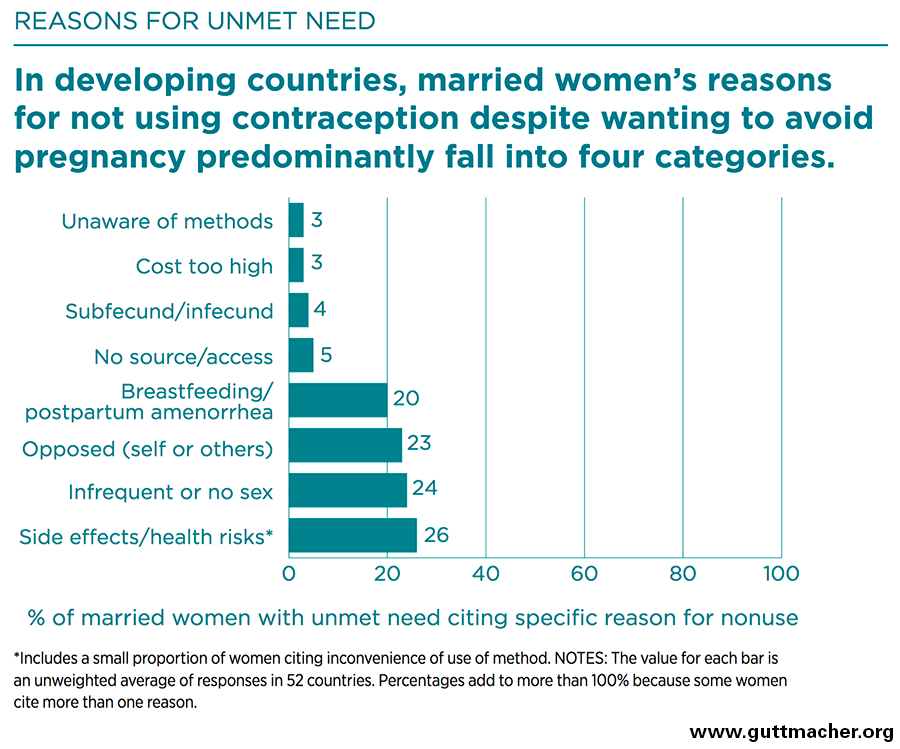Researchers first introduced the concept of developing countries having an unmet need for contraceptive methods in the 1960s when they discovered a weak linear correlation between women’s desires to limit their births and the same women’s actual use of contraceptive methods. Researchers coined the “KAP Gap” shortly after this time. The acronym stands for the gaps between knowledge, attitudes and practice. The gap was defined as the proportion of married women in developing countries who wished to stop childbearing but were not using contraception. The data was measured and analyzed in national surveys undertaken in developing countries from the 1960s through the early 1980s. Moreover, the definition of the KAP-gap was further developed by Westoff and Pebley with the Demographic and Health Surveys (DHS) at which time the concept was renamed “unmet need for family planning.” Family planning, according to Merriam Webster, is “the practice of controlling the number of children in a family and the intervals between their births, particularly by means of artificial contraception or voluntary sterilization.” The reason developing countries have little knowledge on family planning and how to control their pregnancies is because no one has ever educated them on the subject. The United States, from around the same time, has focused on women in need of education and resources about birth control and contraceptive services. America now has publicly funded services and supplies, on the basis of information about a woman’s age and family income. Of course, our system is not perfect, even today in 2018. In fact, family planning resources are deteriorating with furthering of Republican policies. However, it is true that women and families in developing countries have virtually no access to methods that could save their health, sanity, and children.

